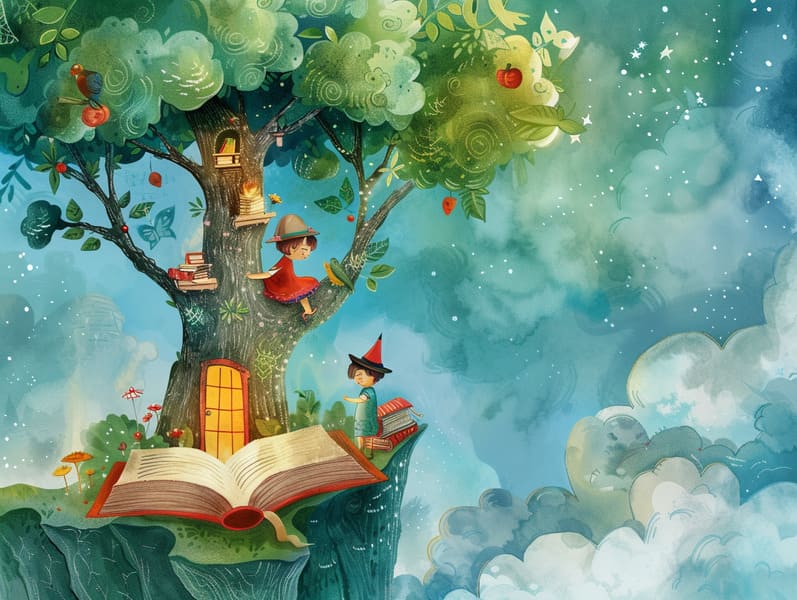The Dawn of Classic Fairy Tales and Its Unchanging Spell.
The Dawn of Classic Fairy Tales and Its Unchanging Spell.
Blog Article

Timeless fairy tales have ancient roots. These narratives have been shared from one generation to the next long before they were ever recorded. They emerged from a variety of traditions, including African traditions. They were initially transmitted among grown-ups, often carrying themes and messages aligned with the societal norms and beliefs of the time.
Jacob and Wilhelm Grimm, Jacob and Wilhelm Grimm, were among the first to compile and publish many of these beloved narratives. Their published works, "Grimm's Story Collection," included classics like "The Little Glass Slipper," "The Story of Hansel and Gretel," and "Schneewittchen," which have since become essentials in the world of timeless fairy tales. Similarly, the Danish author's whimsical narratives, such as "The Sea Maid," and "The Story of the Ugly Duckling," have touched hearts worldwide, securing their place in the pantheon of classic fairy tales.
Despite their ancient origins, these tales remain as meaningful as ever, especially as bedtime stories for kids. These enchanting tales are now available in diverse formats, including artistically illustrated books, fantastical animations, and online storybooks.
Their lasting appeal can be attributed to several whimsical characteristics:
Key Lessons: Classic fairy tales often convey important moral lessons. Tales like "The Tale of the Boy Who Cried Wolf" teach the benefit of sincerity, while "The Hare and the Tortoise" point out the benefits of persistence and unpretentiousness. These stories offer little ones clear distinctions between ethical and unethical, guiding their moral compass in a subtle yet deep way.
Compassion and Insight: Old fairy tales frequently showcase beings facing tests and troubles, provoking readers to sympathize with their struggles and cheer for their triumphs. For instance, "Beauty and the Beast" shows us the virtue of looking past the exterior to know the true essence of a soul, enhancing compassion and perception.
Cultural Perception: Many ancient fairy tales are deeply embedded in the cultural contexts from which they developed. Delving into these fairy tales can provide fascinating glimpses into different customs, developing a sense of cultural insight and discernment.
Fantasy and Innovation: The supernatural elements in fairy tales—magical kingdoms—fuel children’s visions and dreams. These narratives guide readers to imaginary realms, activating inventive ideas and a sense of fascination that continues a lifetime.
Timeless fairy tales are not only enchanting but also enlightening. They provide alluring tools in nurturing various cognitive and emotional skills in young ones. When timeless fairy tales are narrated, they boost speaking abilities by introducing new terms and meanings and elaborate sentence structures. This practice also boosts listening abilities and mental focus, as young ones follow the story, eager to see what happens next.
Furthermore, debating the themes and characters of traditional fairy tales can develop analytical skills and intellectual skills. Young ones are led check here to see patterns, predict happenings, and realize cause and effect. These conversations also support children verbalize their thoughts and feelings, advancing their emotional intelligence.
In today’s online age, the presence of online storybooks has made these fairy tales more available than ever. Internet resources and digital apps offer large libraries of bedtime fairy tales that can be viewed or listened to anytime, anywhere. Fairy tales recited are particularly common, making available an enjoyable way for the young to relish these charming stories. Read-aloud stories and read-aloud videos transport characters and settings to life, often joined by bewitching soundtracks and melodies that heighten the tale-telling adventure.
The timeless allure of old fairy tales lies in their ability to transform to modern days while continuing with their main lessons. Contemporary reinterpretations of these tales often feature more representative protagonists and modern settings, making them accessible to today’s audience. However, the key lessons of heroism, generosity, and impartiality remain unchanged, continuing to reach readers of all ages.
Ancient fairy tales also offer a sense of familiarity and understanding. They put out a well-arranged narrative with a evident beginning, middle, and end, often closing with the wrap-up of conflicts and the triumph of goodness over badness. This foreseeability can be consoling for children, delivering a sense of steadfastness in an constantly changing world.
Timeless fairy tales continue to captivate and instruct new generations, maintaining their captivation and value in modern society. As bedtime stories for kids, they confer upon a perfect blend of enchantment and education, nurturing moral values, empathy, and creativity. The proliferation of web-based fairy tales and the in demand status of fairy tales told out loud guarantee that these old stories remain accessible to new generations.
By upholding and disseminating these stories, we continue to praise the rich tapestry of storytelling and cultural heritage. Whether you are perusing a richly illustrated book, seeing a cyber library, or listening through an read-aloud book, the loveliness of traditional fairy tales is always within reach. These tales demonstrate of the unceasing spell of tales and its ability to link us across eras and regions.
If you are seeing a richly illustrated book, perusing a cyber collection, or listening on an audiobook, the splendor of classic fairy tales is always within reach.
These stories remind us of the immortal essence of tales and its ability to hold us together across generations and cultures, establishing a link that enchants and educates alike.